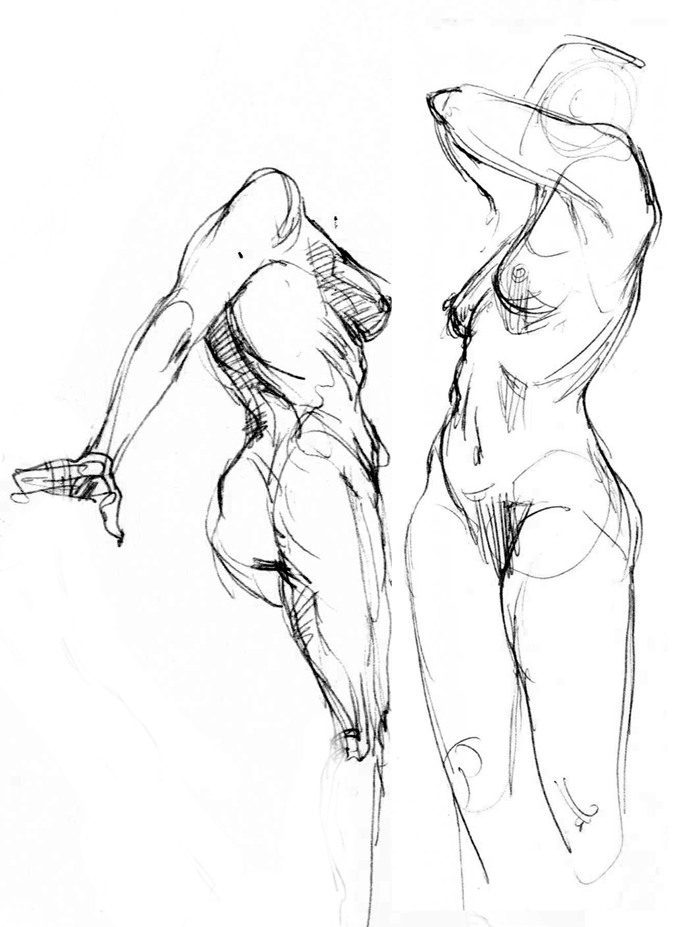03-05-2013, 12:32 AM
So I'm having a rough time with gestures here and need some advice/someone looking in objectively.
What is a gesture drawing? I mean, what traits of a quickly done drawing define it as 'gesture', both in terms of roughness and quality AND time taken to produce/reproduce what's drawn from reference and life? Is there an exact time window one should shoot for before a gesture drawing is considered just a normal one? Are gesture drawings held to good enough standards to where you can make out what's being drawn or can they/should they be a bunch of squiggles if necessary? Is either a standard set by each individual accordingly? As simple as it SHOULD sound it really doesn't seem/feel that way.
I could use some clarification on the matter so I can stop making a fool of myself with this.
What is a gesture drawing? I mean, what traits of a quickly done drawing define it as 'gesture', both in terms of roughness and quality AND time taken to produce/reproduce what's drawn from reference and life? Is there an exact time window one should shoot for before a gesture drawing is considered just a normal one? Are gesture drawings held to good enough standards to where you can make out what's being drawn or can they/should they be a bunch of squiggles if necessary? Is either a standard set by each individual accordingly? As simple as it SHOULD sound it really doesn't seem/feel that way.
I could use some clarification on the matter so I can stop making a fool of myself with this.










![[Image: Gestureexample.jpg]](http://crimsondaggers.com/dennis/images/stuff/Gestureexample.jpg)
![[Image: Gestureexample02.jpg]](http://crimsondaggers.com/dennis/images/stuff/Gestureexample02.jpg)
![[Image: Gestureexample03.jpg]](http://crimsondaggers.com/dennis/images/stuff/Gestureexample03.jpg)
![[Image: GESTURELOOMIS.jpg]](http://crimsondaggers.com/dennis/images/stuff/GESTURELOOMIS.jpg)